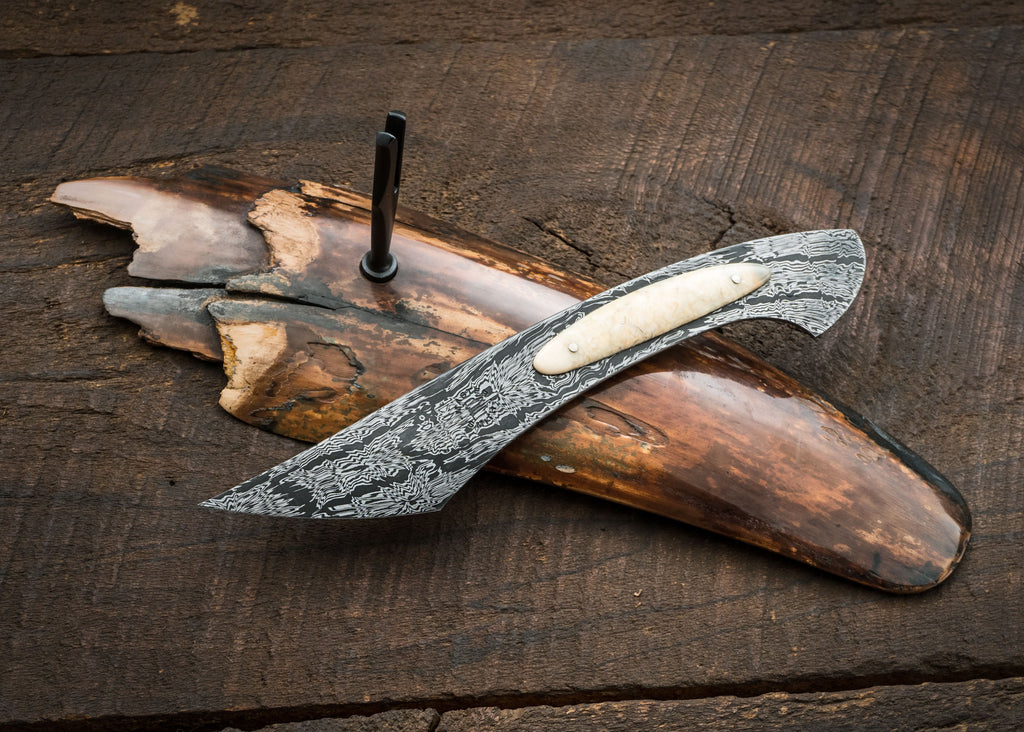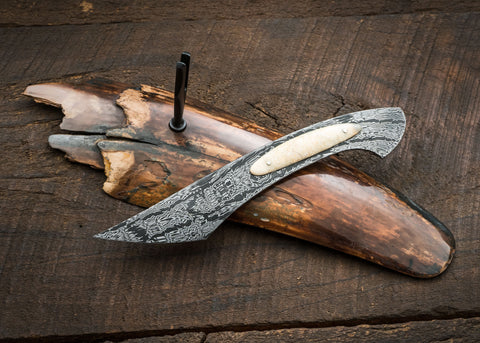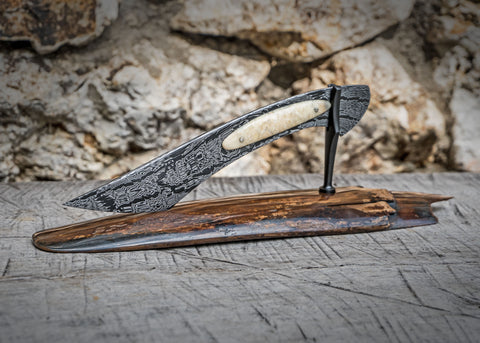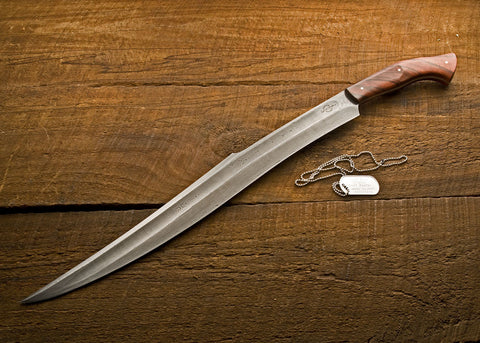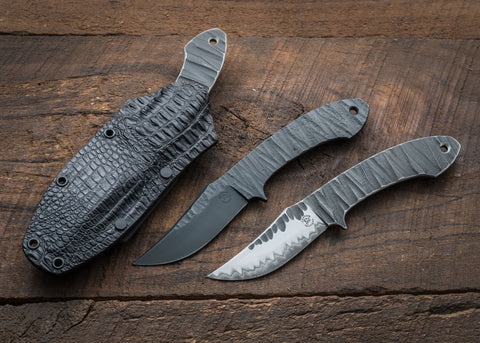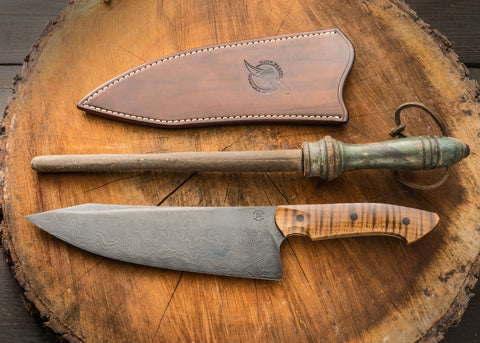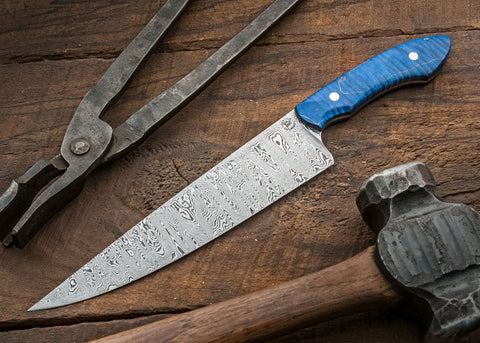Ivory Kiridashi
This piece is an exploration of the interplay between simple and complex. In this case, I'm taking a simple knife and making it complex by marrying the Kiridashi (a Japanese utility knife that's so simple it's really not much more than a box cutter) with materials and design elements that transform it into something very elegant.
A Japanese Kiridashi is just a few straight lines with an angled tip, ground only on one side. I wanted one that had nothing but curves, and no straight lines. The blade is mosaic damascus (80CRV2 and 15N20). It's fully tapered so that the end of the handle is the thinnest and the thickest part comes right before the blade bevels which are double as opposed to single. The "handle" is fossil walrus ivory in two modified ellipses secured with two domed nickel silver pins.
The stand is a piece of fossil mammoth tusk ivory. This section is known as the bark, and is basically the tooth enamel of the tusk. It's the hardest part of the ivory so that if after thousands of years the tusk is decomposed, the bark is the last to go. It's split and cracked, and all I did was clean up a couple edges, flatten the bottom and polish the whole piece so that it looks like a raw artifact as well as a museum piece. I sculpted a piece of blued steel to function as the support.
Overall length 7.25"

